All you need to create diffused light photography.
Learn how to shed soft, flattering light on your subjects, whether you’re in the studio, your living room, or the great outdoors.
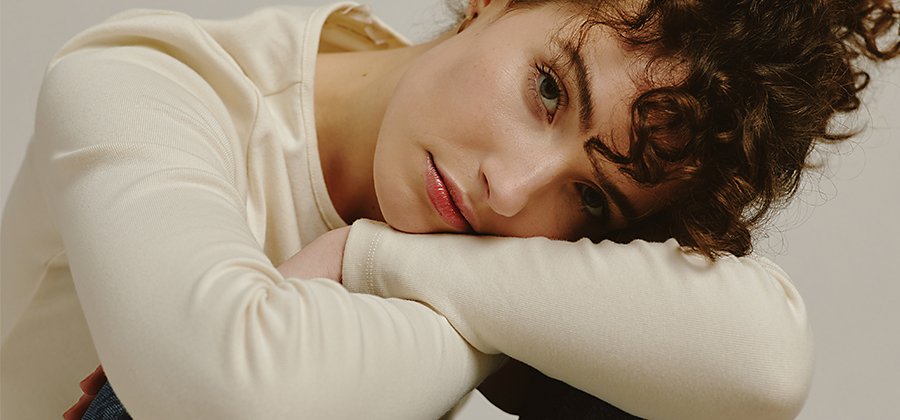
Image by Caleb Gaskins
What is diffused lighting?
If you’ve ever wondered why photos taken at sunset or golden hour look better than photos taken at noon, or how studio portraits always manage to catch subjects in their best light, the answer is diffused light.
Diffused light, or soft light, is light that’s filtered by something. Sunlight through a sheer curtain is diffused. Light from behind a lampshade is diffused compared to the direct light of a bare bulb. The lampshade softens and scatters the light. Sunlight during golden hour is softer, for example, because the sun is at an angle and the atmosphere acts as a diffuser.
In the same way, you can use a diffusion sheet to filter the harsh rays of the sun or another light source in order to produce a soft, even, complimentary glow at any time of day.
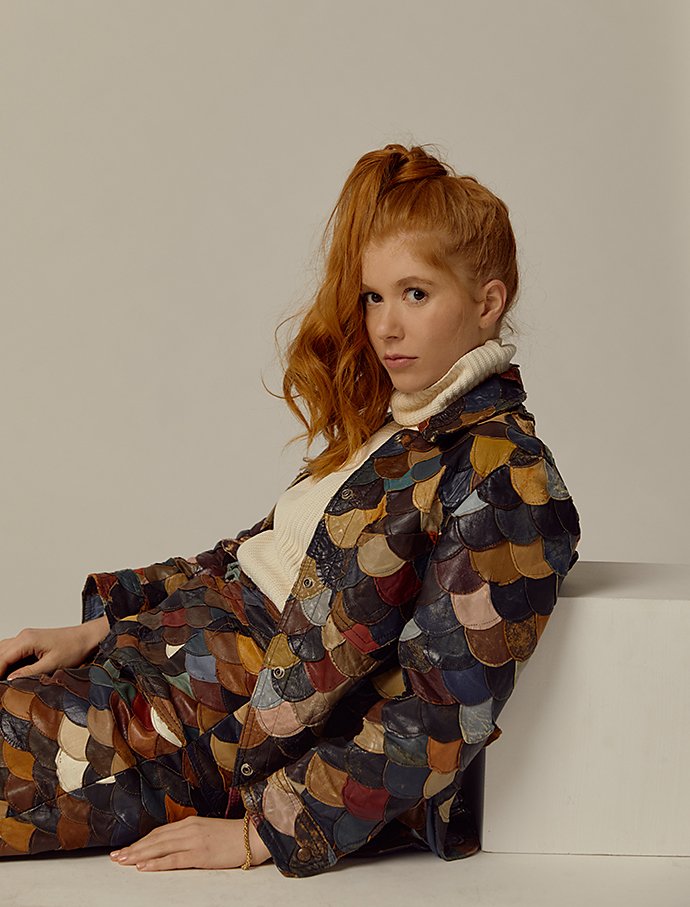
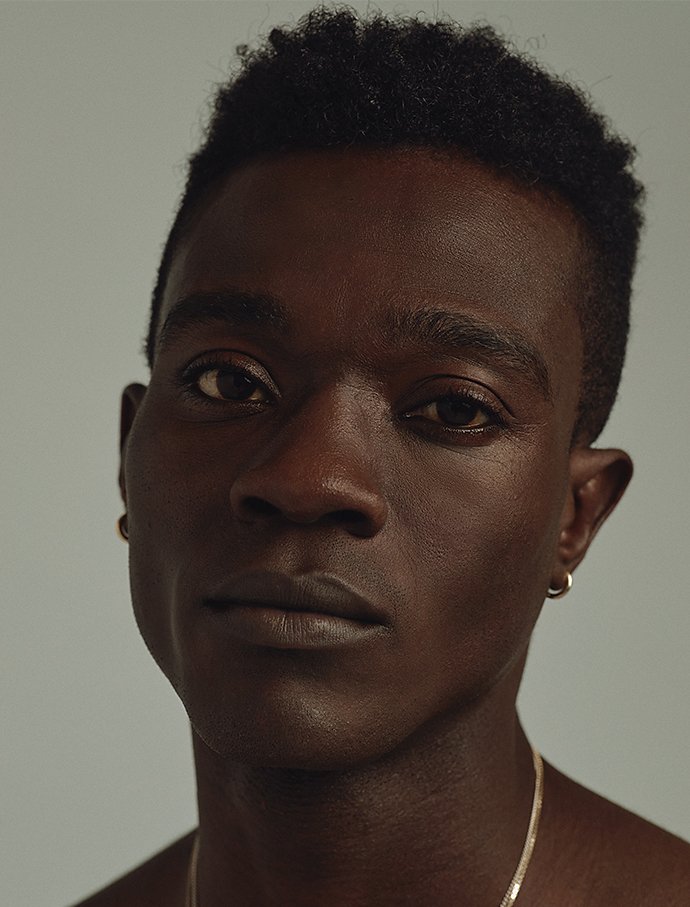
Images by Caleb Gaskins
When to use diffused lighting.
Diffused lighting is most commonly used in portrait photography. The even light is flattering for subjects because it eliminates shadows, softens the face, and allows the subject to relax without squinting.
“Soft light makes the image warmer,” says photographer Caleb Gaskins. “Even if the image has cool tones, it feels welcoming to me, whereas harsh light has a more rigid, in-the-action kind of feeling.”
Soft light is also highly sought after for different types of still life photography, such as food or product photography. In fact, most photoshoots that take place in an indoor studio use some form of diffusion.
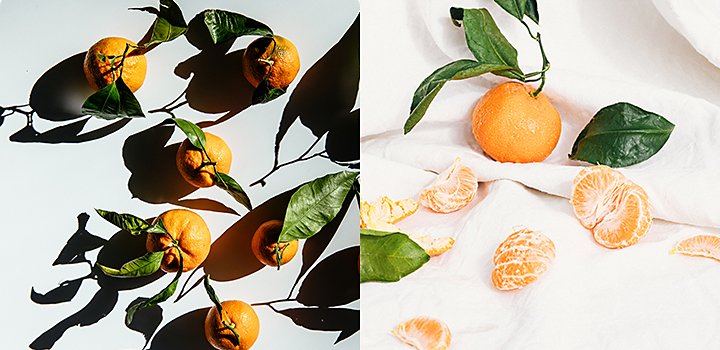
The difference between hard light and soft light.
Hard light, or direct light, creates high-contrast scenes with harsh shadows and sharp, bright highlights. For instance, direct sunlight on a cloudless afternoon is hard light.
While the rays of hard light are direct, soft light has scattered rays. Either can be used as a directional light (light that hits a subject at an angle other than 90 or 270 degrees), but when a soft light source hits a subject from a lower angle it leads to lower-contrast images — and produces scenes with softer shadows and highlights. For example, think of the difference in light quality when the sun shines straight down at high noon versus when it sits lower on the horizon at sunset.
Distance matters too. While it may seem illogical, “the closer a light source is to your subject, the softer it becomes,” says Gaskins. The sun, as a tiny point in the sky, will give off much harder light than a candle held close to someone’s face.
There’s no need to avoid outdoor shoots or midday shoots to make diffused light images, however. With the right tools and know-how, you can use diffusion no matter what type of light nature throws at you.
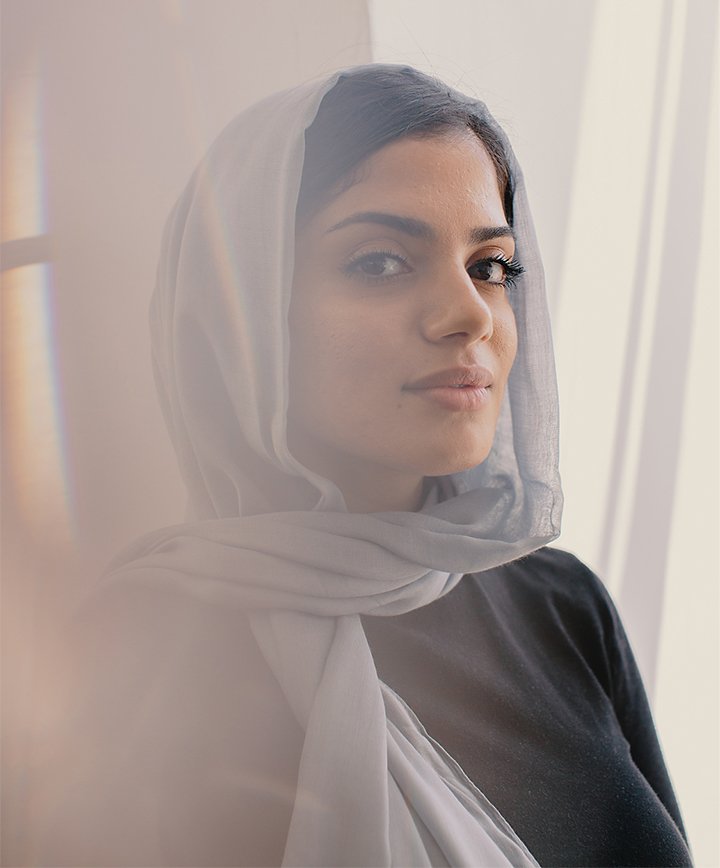
Gear up or DIY: The choice is yours.
“You don’t need a lot of equipment to make soft light,” says Gaskins. Don’t think that studio-quality light is reserved for professional photographers with expensive gear. You can diffuse light on any budget. And there’s more than one way to do it.
All diffusion techniques use the same basic concept: Place a translucent screen, sheet, or filter between a light source and the subject so you diffuse the rays of hard light to create softer lighting. Once you understand this concept, you can create diffused light with whatever materials you have around you. You can easily substitute a window curtain or bedsheet and a white foam board for a store-bought softbox and reflector kit.
A softbox is a simple enclosure with a silver reflective interior and a white diffusion layer that goes over a light. Softboxes direct and diffuse the light as it passes through the screen. They are an indispensable light modifier for most studio photographers. Umbrellas and scrims are common diffusion layer equipment that work in a similar way, but shape light differently.
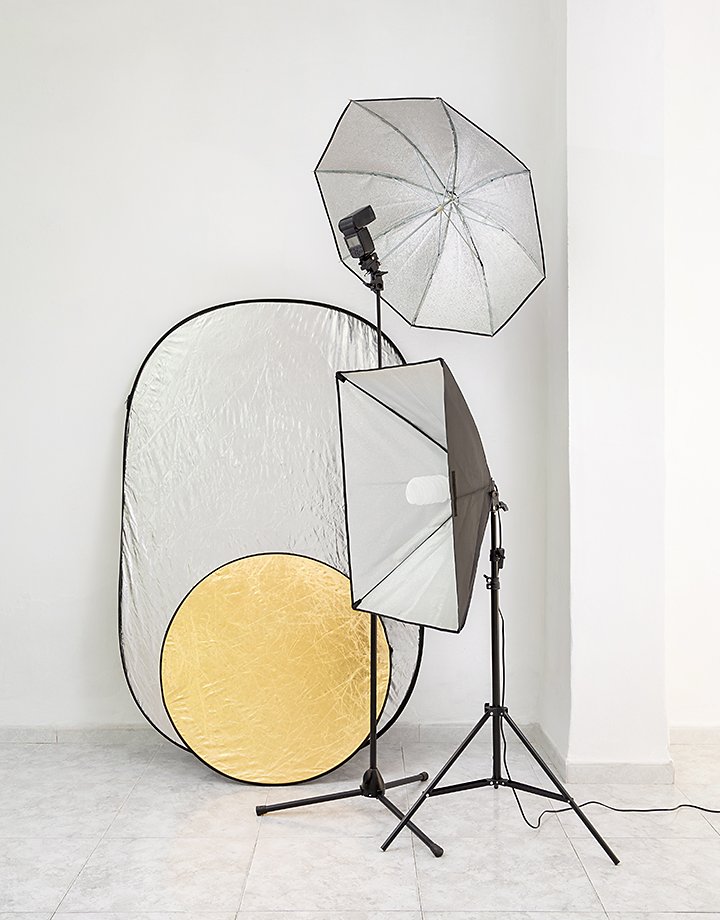
Reflectors and 5-in-1 kits
One of the most versatile and cost-effective light modifiers you can pick up is a 5-in-1 reflector kit. These packable discs feature a reversible layer of reflective material that you can adjust to reveal the diffusion layer beneath. This allows you to adjust the amount of light.
If you want to use it to fill dark shadows, use the reflective layer to bounce light onto your subject. Or if you want to diffuse harsh light, simply unzip the reflector layer and position the diffuser in between your subject and the light source. You can pick up one of these handy tools for $20 or less.
“The more diffusion you have, the softer your light is going to be,” says Gaskins. “But the more diffusion sheets you have, the more powerful your light needs to be, because with each layer of diffusion, less and less light gets through.”
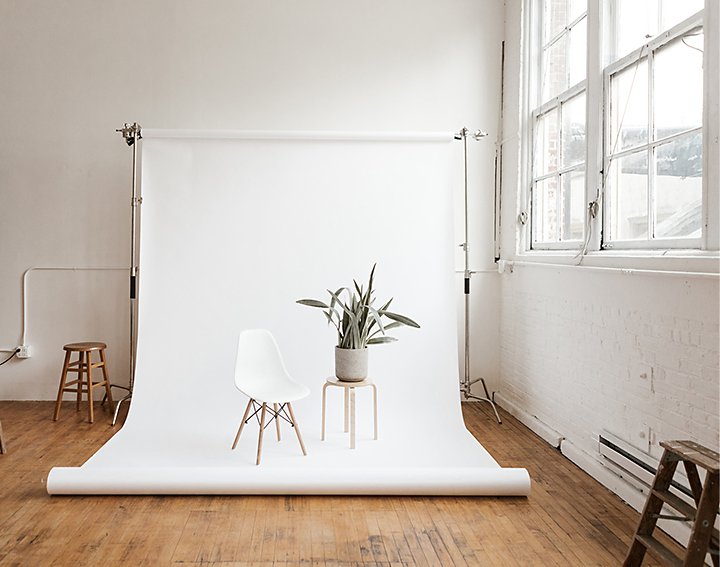
How to create diffused light indoors.
Window light is one of the easiest places to find diffused light indoors. Many natural-light photo studios feature south-facing windows to take advantage of the steady, diffused light that pours in all day long. Position your subject near a window that doesn’t get direct light for a naturally diffused close-up. For even softer light, you can pull a curtain across the window, as long as it’s relatively translucent.
If you want total control over your light, use a softbox or other light modifier to illuminate your subject. Place your softbox at a thirty-degree angle from your subject for a flattering look, or experiment with different light positions. You might surprise yourself with how many different looks and moods you can create with just a light or two.
“When I work with studio lights, I want to make the largest softbox I can to get the softest light possible,” explains Gaskins. “If the studio has white walls, I turn the lights around and just bounce the light off the walls to create a massive softbox. If you don’t have modifiers, diffusion sheets, or scrims, you can set up two lights and just use the walls.”
How to create diffused light outdoors.
Depending on the look and feel you want to create, you can diffuse harsh light yourself or simply plan around mother nature and let her do most of the work for you.
On a sunny day, you’ll want to use a light modifier to diffuse those strong rays. A 5-in-1 reflector is a great choice, since you don’t need any lights, stands, or power sources to use it.
On cloudy days, you can use the weather to your advantage. Overcast days may not make for the most striking landscape photos, but these flat skies act as a natural diffuser that works wonders for portraits.
In addition to cloud cover, you can use the angle of light and time of day to your advantage. “If you’re really constricted with what you have available to help you control sunlight, the best thing you can do is wait until either early morning or evening to shoot, because that’s when the light is the softest,” says Gaskins.
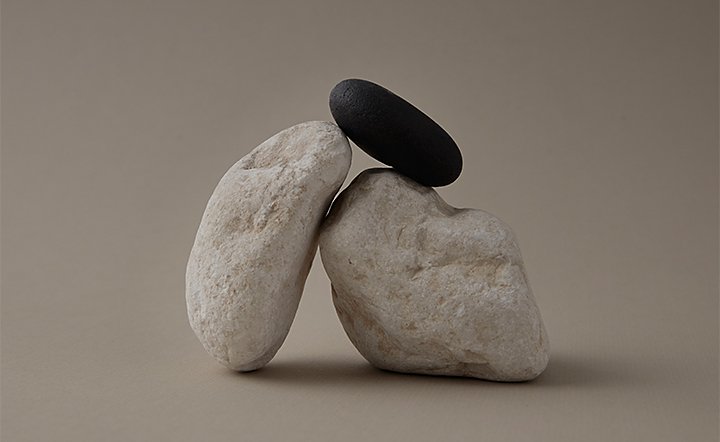
Image by Caleb Gaskins
Take control of any lighting situation.
Diffusing light will become easier as you learn the characteristics of different types of light and understand how to use each to your advantage. Experiment with different tools and techniques to find out what style you gravitate toward. When it comes to lighting setups, it’s not a matter of which option is best, but which one is best for you.
“Get really good at observing natural light and how light changes,” advises Gaskins. “That’s how I learned to work with studio light. It just takes a lot of trial and error.”
Now that you know the core principles of diffused light, you can go out into the world and find it, make it, or shape it to bring your photographic vision to life.
Contributor
Caleb Gaskins
ทำสิ่งต่างๆ ได้มากขึ้นด้วย Adobe Photoshop Lightroom
แก้ไขรูปภาพอย่างง่ายดายด้วย Preset ของ Lightroom อย่างSuper Resolution แชร์ภาพถ่ายอย่างง่ายดายจากทุกอุปกรณ์ และเข้าถึงโปรเจกต์ต่างๆ ของคุณได้ทุกที่ด้วยการจัดการพื้นที่จัดเก็บภาพถ่ายบนระบบคลาวด์
You might also be interested in…
ISO คืออะไร
ค้นพบบทบาทที่หลักสำคัญในสามปัจจัยของการเปิดรับแสงนี้มีต่อการถ่ายภาพ
สำรวจโลกแห่งการถ่ายภาพอาหารพร้อมคำแนะนำจากมืออาชีพในวงการ
ความรู้เบื้องต้นเกี่ยวกับการจัดแสงภาพถ่ายบุคคล
เรียนรู้พื้นฐานของการจัดแสงภาพถ่ายบุคคลเพื่อบอกเล่าเรื่องราวของตัวแบบ
ค้นพบวิธีถ่ายภาพช่วงเวลาที่กำหนดไว้และแบบ Candid ทั้งหมดของวันสำคัญ
แผน Lightroom
แก้ไข จัดระเบียบ จัดเก็บ และแบ่งปันภาพถ่ายได้จากทุกที่
ใช้งานฟรี 7 วัน จากนั้น ฿380.92/เดือน
การถ่ายภาพ
รับ Lightroom, Lightroom Classic, Photoshop และพื้นที่เก็บข้อมูลบนระบบคลาวด์ 20GB ทดลองใช้ฟรี 7 วัน จากนั้น ฿304.95/เดือน
All Apps
รับแอปสร้างสรรค์สำหรับเดสก์ท็อปและมือถือทั้งหมดมากกว่า 20 แอป
ใช้งานฟรี 7 วัน จากนั้น ฿1,143.83/เดือน



